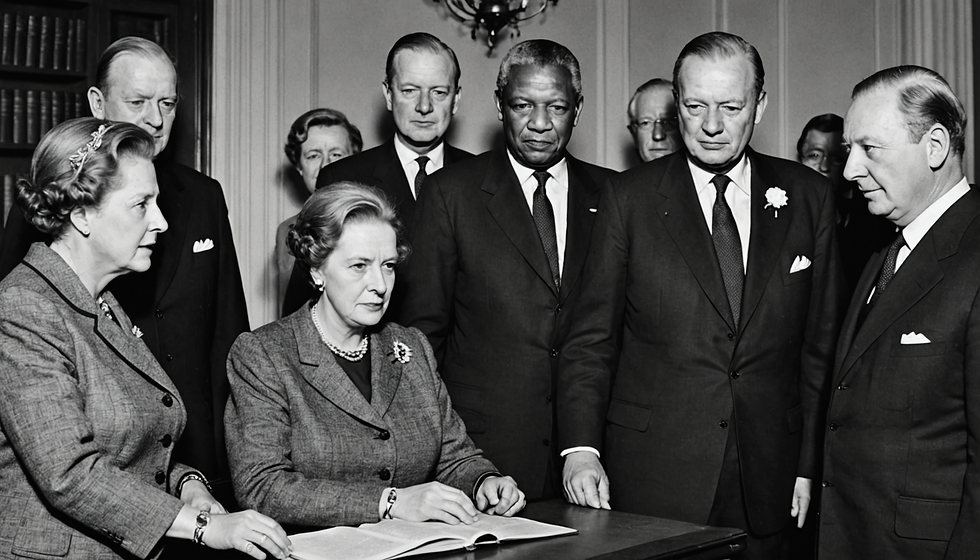The art of timing in negotiations: Lessons from Little Red Riding Hood
- R.M. Boylan

- Jan 19
- 3 min read

It is hard to know whether this strategy by Canadian leaders is a good one when trying to negotiate tariffs in a trade war. Because Canada is forced into a "bargaining" position, this counter strategy is a "bargaining" tactic. It may not elevate the bargaining to a negotiation given the nature of the style and context.
Canadian politicians are heading to Washington, D.C., in response to the possibility of 25 percent tariffs when Donald Trump returns to the White House. Many are attending an event at the Canadian Embassy, located on Pennsylvania Avenue between the U.S. Capitol and the White House. The outcome of this endeavour is difficult to foresee. Drawing on two decades of research on influence and negotiations, this strategy seems to be both ill-timed and may be conveniently perceived as confrontational by the new administration.
The impact of the decision should be evaluated in light of the nature of the leadership style and its administration. The threats appear real and should not be placated. Crossing borders when there are concerns is no longer appropriate unless invited to do so.
There are many versions of the infamous story "Little Red Riding Hood". But generally speaking, it ends badly for "Little Red Riding Hood". She just naively walks into a problem without using strategic foresight or scanning the periphery. Little Red Riding Hood was impulsive and did not think before she acted, letting the wolf hoodwink her into his plan. He nabbed her when she was not paying attention.
Planning your negotiation strategy is critical to success:
When devising a negotiation strategy it is always a good idea to understand how your plan could backfire or turn into a misfire. That means understanding how your opposition could distort the truth given the situation or change the play. I rarely move quickly when dealing with an unfriendly situation where trust needs to be built. Moreover, if the opposite side may have a sly plan, be prone to tricks or reworking the truth as a negotiator, it is never a good idea to go into a situation unprepared. To negotiate a win-win outcome an invitation is required. Otherwise we are entering a conflictual situation or a bargaining situation which is always a losing position.
In this situation oftentimes negotiators get so caught up in their positions and negotiating positions that they do not prepare a proper negotiation plan based on interests.

Canada needs to review history here and what is really happening. 1812 needs to be assessed before taking a bold position, as this could be used to distort reality and Canadian best intentions. Sometimes it is best to analyze the situation before moving ahead too quickly with a position. There are mutual interests below the positions in a negotiation that require evaluation before jumping to defending positions at all costs.
When dealing with negotiations, positions and territories are important. Interests are hidden underneath. A smooth entry is required otherwise little Red Riding Hood could get trapped and cornered.
It's crucial to assess how our opponent might unintentionally perceive any overt or subtle action as an attack rather than a simple attempt to approach them and sell our merits. People often overlook that fundamental animal instincts influence perceptions and nervous system responses during negotiations. In a negotiation it is always best to be invited by the other party to negotiate or sell our positions.
It is uncertain how this could turn out with Canadians going to the U.S.
Usually in a negotiation or when trying to move a "bargaining" conflict to a negotiation we move slower with diplomatic grace. The way a cat takes it's time to eat it's food compared to a dog.
To transform a "bargaining situation" or conflict into a negotiation, it is essential to minimize the chances of perceptions being misunderstood, misrepresented, or misaligned. Effective negotiation demands careful planning. It involves de-escalating conflict and maximizing mutual benefits. Achieving this requires thoughtful preparation and the capacity to understand the other person's perspective and point of view.
References:
Stories of Little Red Riding Hood can date back as early as 3000 years old with variations.
The earliest version being attributed to Charles Perrault. Cultural anthropologist Jamie Tehrani found versions of the fable dating back 3,000 years to Greece and Aesop. The origins date back to 10 Century France.
1). Boylan, R.M. (2006-2009). Conflicts and considerations comparing Abraham Maslow's hierarchy of needs to Jane Loevinger's model of ego development for assessing the level of development of a leader. M.A. Leadership Studies.





Comments